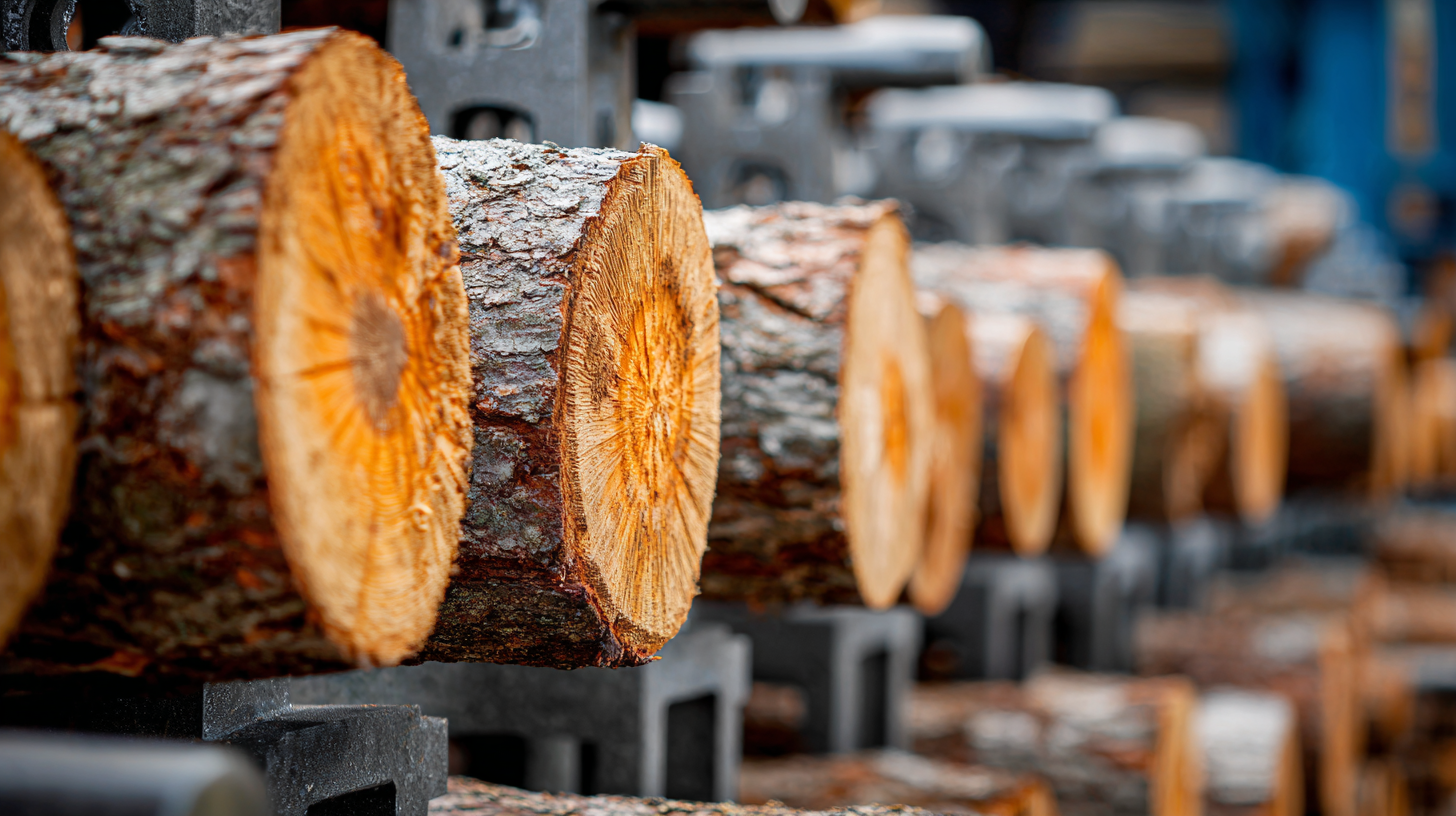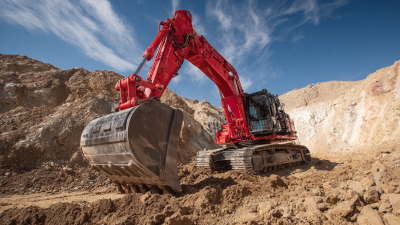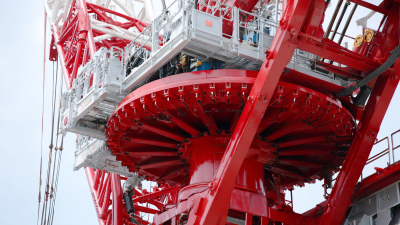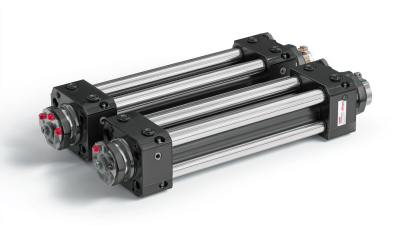 +86-13349293098
+86-13349293098
Leave Your Message
-
 Contact Phone
Contact Phone -
 Contact WhatsApp
Contact WhatsApp -
 Contact Email
Contact Email



 In the realm of modern logging operations, the efficiency of the Wood Splitter Cylinder
plays a crucial role in optimizing productivity and reducing operational costs. According to the
Forest Products Journal,
advances in hydraulic technology have significantly enhanced the performance of these cylinders, leading to a
reported increase of up to 35% in splitting speed over the last decade. This data underscores
the importance of continually assessing the capabilities and innovations surrounding Wood Splitter Cylinders to stay competitive
in the industry.
In the realm of modern logging operations, the efficiency of the Wood Splitter Cylinder
plays a crucial role in optimizing productivity and reducing operational costs. According to the
Forest Products Journal,
advances in hydraulic technology have significantly enhanced the performance of these cylinders, leading to a
reported increase of up to 35% in splitting speed over the last decade. This data underscores
the importance of continually assessing the capabilities and innovations surrounding Wood Splitter Cylinders to stay competitive
in the industry.
As noted by industry expert Dr. James Carter,
"The evolution of Wood Splitter Cylinders has not only streamlined
the logging process but also contributed to more sustainable forestry practices." His insights reveal the direct correlation
between the efficiency of these cylinders and the overall environmental impact of logging operations. By reducing the time and
energy required to split logs, operators can minimize their carbon footprint and operational waste, aligning with contemporary
sustainability goals in forestry.
Thus, understanding the intricate mechanics and advancements in Wood Splitter Cylinder technology is essential for logging
professionals seeking to enhance their operational efficiency. Engaging with these innovations will not only improve productivity
but also pave the way for more environmentally responsible logging practices, ultimately benefiting both the industry and the planet.
Wood splitter cylinders play a crucial role in enhancing efficiency within modern logging operations. These hydraulic components are designed to exert significant force, enabling the quick and effective splitting of logs. By maximizing the power delivery from the hydraulic system, wood splitter cylinders reduce the time and manual labor required for log preparation. This efficiency cascades throughout the logging process, allowing for quicker turnaround times from harvesting to processing, ultimately leading to increased productivity and profitability.
Moreover, the precision and reliability of wood splitter cylinders contribute to improved safety in logging operations. Traditional methods of log splitting often involve manual labor, which can be hazardous and slow. In contrast, utilizing hydraulic cylinders minimizes human intervention, thereby reducing the risk of injuries. Additionally, the controlled splitting action provided by these cylinders allows operators to handle larger and denser logs with ease, further streamlining the workflow. As logging operations continue to evolve, wood splitter cylinders remain integral in promoting both efficiency and safety in the industry.
The efficiency of wood splitters plays a crucial role in modern logging operations, with cylinder design being a key factor in their performance. Recent studies highlight various designs and materials that impact the overall effectiveness of these machines. For instance, the utilization of low-density solid wood, like white poplar, demonstrates how specific wood characteristics can influence splitting efficiency and machinery durability. Research indicates that optimizing cylinder design not only improves the power of the splitter but also reduces operational strain, potentially extending the life of the equipment.
Additionally, innovative approaches such as the application of artificial neural networks have shown promise in predictive analysis, enhancing machine performance under varying conditions. This technology can be adapted to optimize wood splitter cylinder designs, ensuring better heat transfer and lubrication, thus increasing operational efficiency. Industry reports suggest that selecting the right materials and designs can lead to a 20%-30% increase in efficiency, making it imperative for logging operations to stay updated on the latest developments in wood splitter technology. By focusing on comparative analyses of different cylinder designs, operators can achieve significant improvements in both productivity and cost-effectiveness.
The impact of hydraulic technology on wood splitting performance cannot be overstated in modern logging operations. With advancements in hydraulic systems, log splitters have evolved to enhance efficiency and productivity. For instance, a typical 20-ton hydraulic log splitter can exert pressures up to 3,000 PSI, significantly increasing the splitting ability compared to older, manual methods. According to a recent industry report, the use of hydraulic technology in wood splitting has resulted in a 25% reduction in operational time, allowing logging crews to process timber more swiftly and efficiently.
Additionally, the ergonomic design of hydraulic log splitters not only improves user safety but also maximizes output. Advanced systems feature operational controls that minimize physical strain, enabling operators to work comfortably for extended periods. This trend is reflected in industry studies, which show that modern hydraulic splitters can achieve up to 60 splits per hour, compared to just 20 splits with traditional methods. The efficiency gained through hydraulic technology not only benefits logging companies in terms of output but also bolsters sustainability efforts by facilitating faster processing and reducing the carbon footprint associated with timber harvesting.
| Cylinder Type | Max Pressure (psi) | Flow Rate (GPM) | Splitting Force (tons) | Efficiency Rating (%) |
|---|---|---|---|---|
| Single Acting | 3000 | 10 | 15 | 85 |
| Double Acting | 4000 | 12 | 25 | 90 |
| Multi-cylinder | 3500 | 15 | 30 | 92 |
| Variable Displacement | 5000 | 20 | 35 | 95 |
 In modern logging operations, the efficiency of wood splitter cylinders plays a pivotal role in ensuring productivity and cost-effectiveness. The advanced features of these hydraulic cylinders, such as enhanced design for higher force generation and quicker cycle times, contribute significantly to operational efficiency. By focusing on cost-benefit assessment, logging companies can determine how these advanced features impact their overall expenditure and return on investment, enabling them to make informed decisions about equipment upgrades.
In modern logging operations, the efficiency of wood splitter cylinders plays a pivotal role in ensuring productivity and cost-effectiveness. The advanced features of these hydraulic cylinders, such as enhanced design for higher force generation and quicker cycle times, contribute significantly to operational efficiency. By focusing on cost-benefit assessment, logging companies can determine how these advanced features impact their overall expenditure and return on investment, enabling them to make informed decisions about equipment upgrades.
The integration of technology into wood splitter cylinders also brings about remarkable improvements in fuel efficiency and reduced maintenance costs. Features like automated pressure regulation and improved sealing systems significantly lower the wear and tear on components, leading to longer service life and less frequent repairs. Understanding these benefits in relation to operational costs allows businesses to optimize their budgeting, ultimately enhancing their profitability while maintaining sustainable logging practices. These assessments provide a clearer picture of how investing in advanced cylinder technologies can yield substantial long-term advantages in modern logging operations.
The future of wood splitter cylinder innovations is critical in modern logging operations, as sustainability becomes increasingly important in the industry. The transition towards eco-friendly technologies has prompted manufacturers to explore advanced designs that improve efficiency while minimizing environmental impact. A recent report suggests that the special cylinder market alone is projected to reach approximately $822.8 million by 2032, reflecting the growing demand for high-performance and sustainable manufacturing solutions.

In line with these trends, companies are continually investing in R&D to develop more efficient wood splitter cylinders that can enhance productivity in logging operations. For instance, innovations in materials and automation technology can lead to lighter and more durable cylinders, improving their performance and lifespan. Moreover, the use of smart manufacturing techniques not only benefits the production process but also aligns with the broader trend of green manufacturing, as highlighted by the increasing focus on minimizing resource consumption and environmental footprint across the board. This shift is essential for creating a sustainable framework for the logging industry as it adapts to changing market demands and regulatory pressures.






